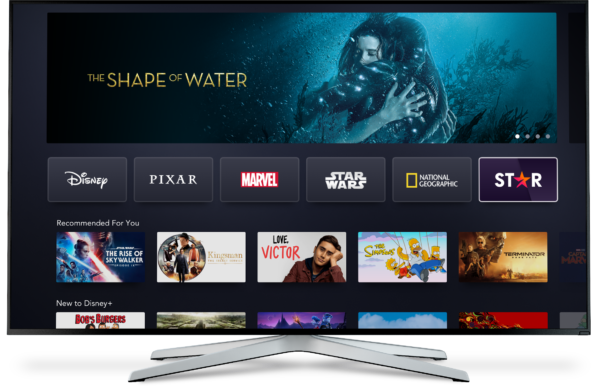
Seeing the Disney+ launch across the Singapore bayfront last week, you’re reminded of a truism of not many years ago, that people would never pay for content if they could get it free.
Singapore is a small market for Disney, to be sure, but the world’s largest entertainment company sure made a grand entrance with a spectacular light show to kick off its much-awaited video streaming service.
What could account for that brashness and, of course, extravagance? Well, clearly, it’s that streaming services are no longer a novelty and people are now willing to pay for content.
Just two weeks ago, before its Singapore launch, Disney revealed that it had signed up nearly 95 million Disney+ subscribers globally. It plans to have 260 million by 2024.
That would bring it ahead of the number of subscribers Netflix has today, which is more than 203.7 million. Netflix added 37 million in a pandemic-stricken 2020.
So, what changed between the turn of the millennium, when Napster opened the floodgates to illegal MP3 downloads, and today? Why have so many streaming services flourished?
Clearly, consumers got something they would happily pay for. What sealed the deal was a simple, reasonable offer that gave them the content they wanted in a manner they wanted.
In Singapore, Disney+ costs S$11.98 a month, or S$119.98 a year, and gives access to 500 films and 15,000 episodes of content, including new episodes of the popular Mandalorian and WandaVision, along with others in the Disney stable.
The offer lets you connect up to four devices or users so everyone at home can watch at the same time. Your kids can fire up Frozen 2 on the TV while you catch up on the Mandalorian episodes on the tablet.

For Singapore viewers, similar offers are now available from Netflix, Amazon Prime, HBO and Apple TV. In their fierce competition for viewers, the companies behind these services are spending lavishly to get Hollywood A-Listers as well as local talents to create new engaging content.
How different a world this is from the dystopian one that the entertainment industry painted all these years ago.
You can’t beat piracy by using only the carrot – you have to resort to the stick with legal threats and anti-piracy restrictions, according to many in the industry back then.
I still remember when CDs were made to be impossible to “rip” or convert to MP3 tracks, only to be defeated by a community of users who found tools to bypass the copy protection.
In 2005, one record company, Sony BMG, even went so far as to create a secret rootkit that was meant to prevent you from copying the tracks but ended up exposing unwitting users to malware. Treating customers as thieves was the modus operandi.
Back then, there were already conversations about delivering a service that made sense to customers. A simple flat fee and access to a large catalog on a wide number of devices could seal the deal, some optimists opined.
More than a decade ago, this was tougher to accomplish because the cloud and content delivery networks were not as advanced as today. Even devices like smart TVs have only really taken off in the past five years or so.
But thankfully, the technology has made streaming services a reality, so today most youngsters have no concept of a DVD or CD. Or the idea that content is released at a studio’s fancy to maximise profit in each region, instead of benefiting customers.
Companies such as Netflix, which was once a DVD rental company, challenged the strict structures that the entertainment industry had on when and where shows should be released.
What’s the big idea? Deliver the content to the people on their terms and they will pay for it. Well, it worked. When it became easy and cheap enough to get the content legitimately, the appeal of piracy surely dropped.
It’s true there will always be piracy – there are hardcore users who will never pay. That said, the more effective the carrot, the less need there will be for the stick.
Some popular shows like The Mandalorian have been heavily pirated but that’s also partly because Disney+ wasn’t available in more regions than the initial markets such as the United States. As it expands its reach, you’d expect more viewers to sign on.
Ironically, the variety of streaming services today has some critics complaining that they have to sign up for several of them to watch all the shows they want.
Really? Shall we go back to using a laggy set-top box from your pay-TV operator that was stuffed with all the copy protection technology because you can’t be trusted as a paying customer?
When choice is a burden, you know things are better off than before.
And far from the doomsday scenario painted back in 2000, the content industry certainly appears to be doing better than before. It’s certainly more confident people will pay for what it is creating.






